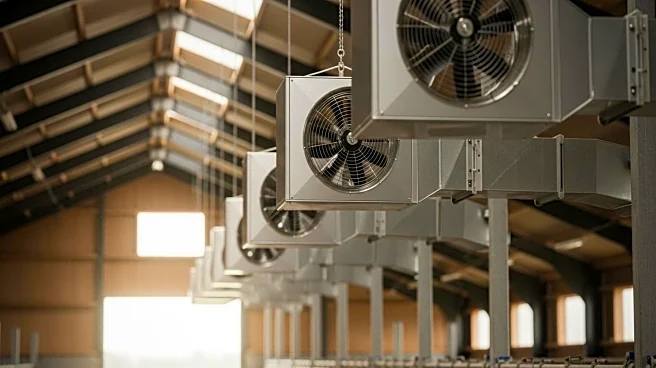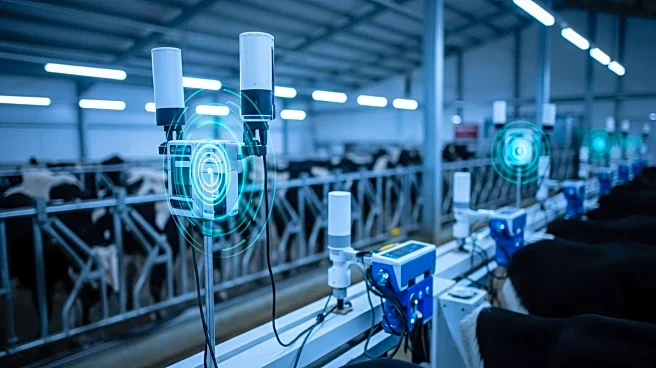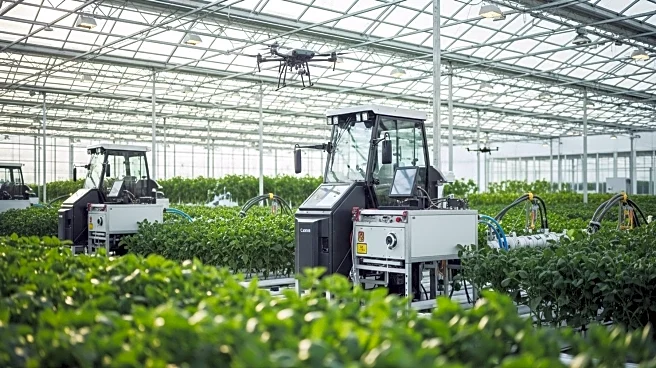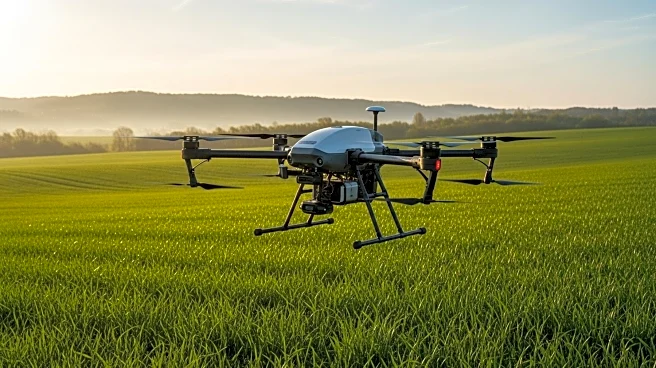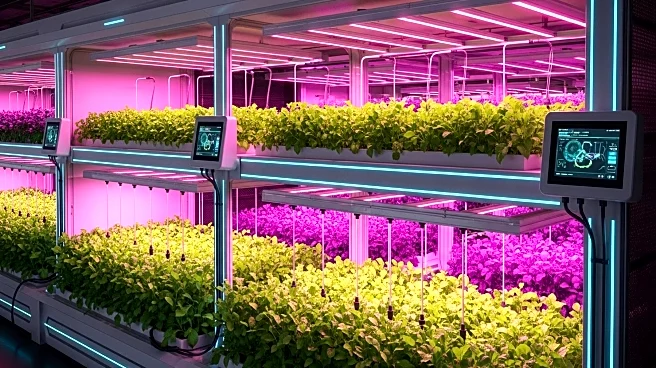What's Happening?
Proper ventilation in dairy barns is crucial for maintaining cow comfort and health, impacting production levels. Experts emphasize the importance of airflow reaching cows at their resting height, not just in alleyways. Jennifer Van Os from the University of Wisconsin-Madison highlights the need for fresh air circulation throughout the year, especially in summer and winter. Kirk Brincks, formerly of J&D Manufacturing, notes that understanding the temperature and humidity index (THI) is vital for effective ventilation, as it can prevent heat stress and maintain milk production. Evaluating ventilation systems regularly is recommended to ensure optimal airflow and address any obstructions.
Why It's Important?
Effective ventilation in dairy barns is essential for preventing health issues such as pneumonia, which can arise from poor air quality, especially in cold weather. Proper airflow helps maintain lower temperatures, which cows prefer, and supports overall herd health. By understanding and implementing THI, producers can avoid heat stress, which negatively impacts milk production. Regular evaluations of ventilation systems can lead to more efficient resource allocation, ensuring that cows remain comfortable and productive, ultimately benefiting the dairy industry.
What's Next?
Producers are advised to conduct spring and fall evaluations of their ventilation systems to prepare for seasonal changes. Adjustments may include fan direction, maintenance, and ensuring inlets and outlets are unobstructed. By staying ahead of potential ventilation issues, producers can mitigate health risks and optimize milk production. The industry is moving towards a more nuanced understanding of ventilation needs, focusing on THI rather than temperature alone.


